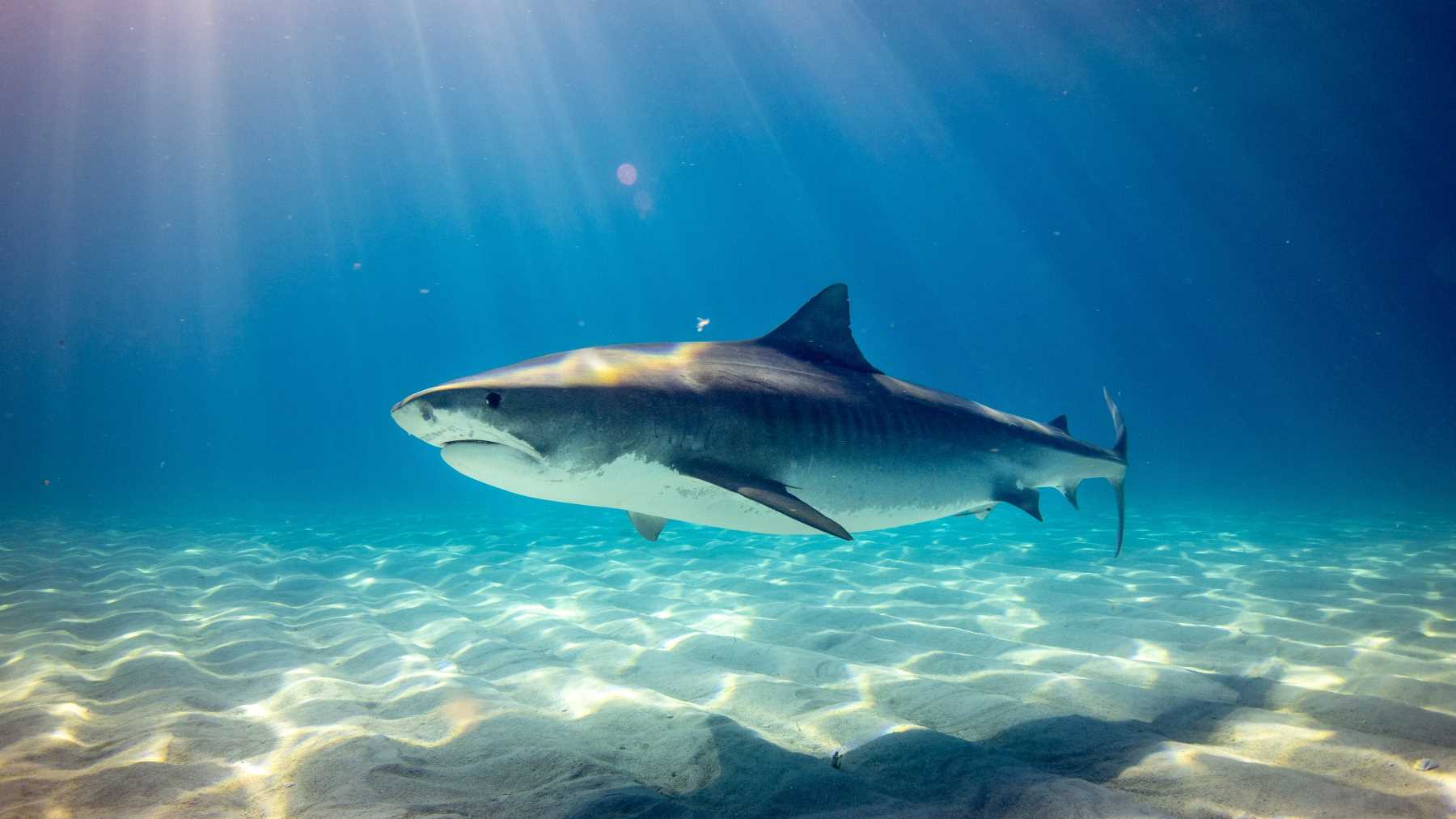
Swimming with sharks – Top 3 sharks we can swim with
If you are the kind of person who goes scuba diving with sharks, odds are you will find swimming with sharks with the Blue Wilderness Research Unit more fascinating than scary.
Sharks have been a primary concern in areas of ocean conservation in the last two decades, allowing more and more people to change their perception towards these incredible animals. Due to the unique global circumstances in 2020, we at Blue Wilderness decide to celebrate our sharks.
While sharks will almost always represent the Jaws theme song to some, others are passionate about swimming with sharks and learn more about these awesome animals. There are many reasons to love sharks, like the biggest “fish” that feeds on the smallest creatures, some species that travel up the rivers to give birth, or that Tiger sharks will eat any random objects. These are our top three favourite sharks that use the coastline for their survival.
1. Whale shark – Rhincodon typus
Size: Up to 14 – 17m
IUCN Status: Endangered – (2016)
Location: Cosmopolitan in tropical and temperate waters
It is also known as the largest fish because can weight as much as 36 tonnes. This enormous shark is harmless and popular as an ecotourism attraction in many parts of the world. Juveniles whale sharks aggregate in coastal areas to feed on zooplankton blooms or on fish spawning events. As they mature, they become solitary animals and move into oceanic waters. Female whale sharks reach maturity when they are about 10 m long and can produce about 300 pups! They are ovoviviparous, which means they produce egg cases that hatch inside the mother. Pups will then grow until they are fully developed and ready to face the world. Baby whale sharks are about 55 – 65 cm long! Although occasionally found in summer time at Aliwal Shoal, the first time Blue Wilderness Research Unit volunteers encounter a whale shark was during a Ragged-tooth shark survey on a winter day! The water was 22 degrees celsius, a bit colder for this species who prefers warm tropical waters.
2. Zambezi/ Bull shark – Carcharhinus leucas
Size: Up to 4 m
IUCN Status: Near Threatened – (2005)
Location: Worldwide in tropical and warm temperate waters
This shark is known in South Africa as the Zambezi shark because it was first reported in the Zambezi River. Bull sharks can live up to 50 years long reaching maturity when they are about 20 years old. They depend greatly on coastal areas as they use them not only for feeding but as nursery grounds. After 10 to 11 month gestation, females move into estuarine or fresh waters to give birth to their young. Neonates and young juveniles appear to use these habitats as nursery areas. Bull sharks are viviparous producing 6 – 13 pups in one litter. They commonly have a bad reputation among surfers, but during our swimming with sharks expeditions Bull sharks showed a shy and calm behaviour. The most amazing encounter I had with Bull sharks was when two groups of 4 bull sharks were swimming in an eight pattern, showing great coordination among the 8 sharks. It was spectacular!
Download FREE eBook with 18 scholarships to fund your study abroad experience

3. Tiger shark – Galeocerdo cuvier
Size: Up to 5.5m
IUCN Status: Near Threatened – (2018)
Location: Worldwide in tropical waters
It is an unmistakable shark due to its dark vertical bars that resemble a tiger pattern coloration, which is more prominent in juveniles. Adults can weight more than 900kg and live more than 29 years. The Tiger shark tends to prefer shallow – turbid waters near estuaries and harbours. They are viviparous and have large litter sizes with a maximum of 82 pups, but the average litter size is between 26-33 pups. Gestation is approximately 15-16 months with a triennial reproductive cycle. Tiger sharks are known to feed on anything, and interestingly juveniles survival increases when adults are not present. This suggests that Tiger feeds on their young. Tiger sharks are a common ecotourism attraction in various parts of the world. At Aliwal Shoal in South Africa, Tiger sharks surveys are carry out during the summer months. Swimming with Tiger sharks is better done when there is little current and the water is higher than 23 degrees celsius. They approach divers slowly and in a gentle manner, giving plenty of time to admire their majestic presence.
While certain sharks might be a little more nerve-inducing than others, swimming with sharks is always a good idea. If you are still a bit hesitant, check out the biggest myths and misconceptions about sharks. Find a way to give sharks a chance by getting involved with our Blue Wilderness’ Shark development program.
Discover how to be a Great White Shark research Intern in South Africa

Blogger details – Jessica Escobar-Porras
Jessica has a Master degree in Fisheries Science and Ichthyology. She is the Chief scientist for the Blue Wilderness Shark Research Unit. Jessica specialises in shark research and conservation.

 Let us know where we can send fundraising opportunities. In the meantime download our eBook featuring 18 scholarship awards for study-abroad adventures
Let us know where we can send fundraising opportunities. In the meantime download our eBook featuring 18 scholarship awards for study-abroad adventures  Let us know where we can send fundraising opportunities. In the meantime download 40 great fundraising ideas eBook right here
Let us know where we can send fundraising opportunities. In the meantime download 40 great fundraising ideas eBook right here  Let us know where we can send you more fundraising insights to help jump start your career as a marine scientist
Let us know where we can send you more fundraising insights to help jump start your career as a marine scientist